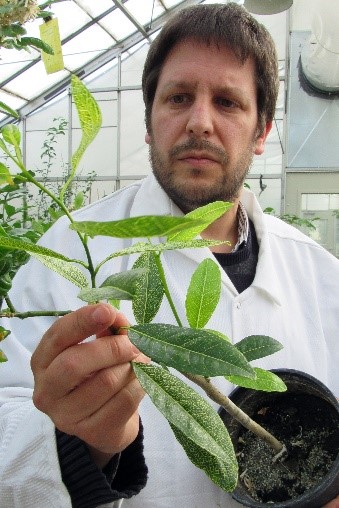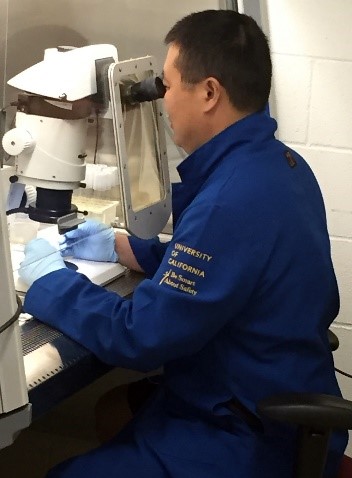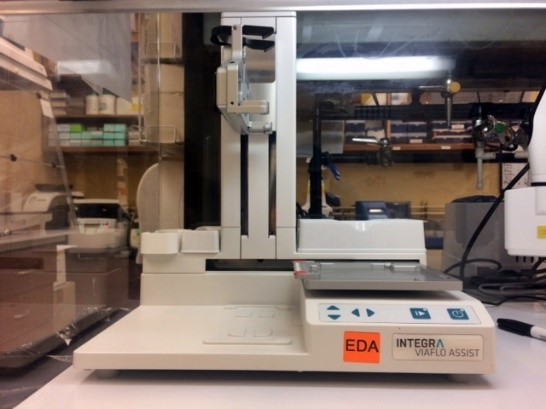EDA Supports University of California Efforts to Protect America’s Citrus Crop

Georgios Vidalakis of the Citrus Clonal Protection Program (CCPP) examines a citrus plant specimen. The CCPP is charged with protecting California's important citrus crop.
The commercial production of citrus fruit generates more than $7 billion annually for California’s economy, a contribution credited with supporting tens of thousands of jobs in the Golden State. That vital economic engine, however, is at constant risk from a variety of diseases that have devastated crops in citrus growing regions around the world. Responsibility for safeguarding California’s lemon, orange, and grapefruit groves falls to the Citrus Clonal Protection Program, housed at the University of California Riverside’s (UCR) Fawcett Laboratory. UCR has been charged with the protection of California’s citrus crop since the 1930s when pytopathologist Howard Fawcett discovered the viral characteristics of the citrus psorosis disease.
In 2005, UCR faced one of its biggest challenges to date. That year, Huanglongbing (HLB), commonly known as citrus greening disease, was first detected in the United States, decimating the commercial citrus harvest in Florida. Responding to the emergency, UCR scientists developed a first of its kind program to transfer plant samples from Florida for study at Fawcett Laboratory. This pilot project was so successful it quickly overwhelmed the Citrus Clonal Protection Program’s modest facilities.

Citrus Clonal Protection Program (CCPP) staff member Ning Chen is pictured at work at the University of California Riverside's Fawcett Laboratory.
“I’m operating in a facility that is an old one. And I’m overflowing with varieties,” recalls Dr. Georgios Vidalakis, director of the Citrus Clonal Protection Program. “We needed help. We needed equipment so we could keep working on solutions for HLB and other problems.”
Within weeks, UCR’s Office of Technology Partnerships had prepared and submitted a grant proposal for funding under the Economic Development Administration’s (EDA) Economic Adjustment Assistance (EAA) program. The $500,000 ultimately awarded by EDA enabled UCR to purchase state-of-the-art equipment and accelerate the development of HLB-free citrus germplasm and distribute pathogen-tested material to industry.
Thanks to the ingenuity of UCR scientists, backed by EDA’s investment, all citrus trees grown in California are HLB clean. The new resilience of California’s citrus groves to the effects of HLB infestation has saved as many as 20,000 jobs that directly or indirectly rely on the Golden State’s citrus harvest.

This pipetting robot, purchased with support from an EDA grant, helps the Citrus Clonal Protection Program (CCPP) automate workflows and increase its laboratory capacity.
“Florida has been decimated, well over 50 percent of their citrus has been totally destroyed,” explains Jim Llano, Associate Director for Corporate Partnerships at UCR’s Office of Technology Partnerships. “California is trying to take advantage of the lessons from Florida. The efforts of EDA in providing this equipment has local, state, national and world implications, repercussions and — eventually — solutions.”
The Economic Adjustment Assistance program (PDF) provides a wide range of technical, planning, and public works and infrastructure assistance to regions experiencing adverse economic changes due to changing trade patterns and other factors. To learn more, and to see how others are using EDA grants to support local economic development, visit EDA’s website.








